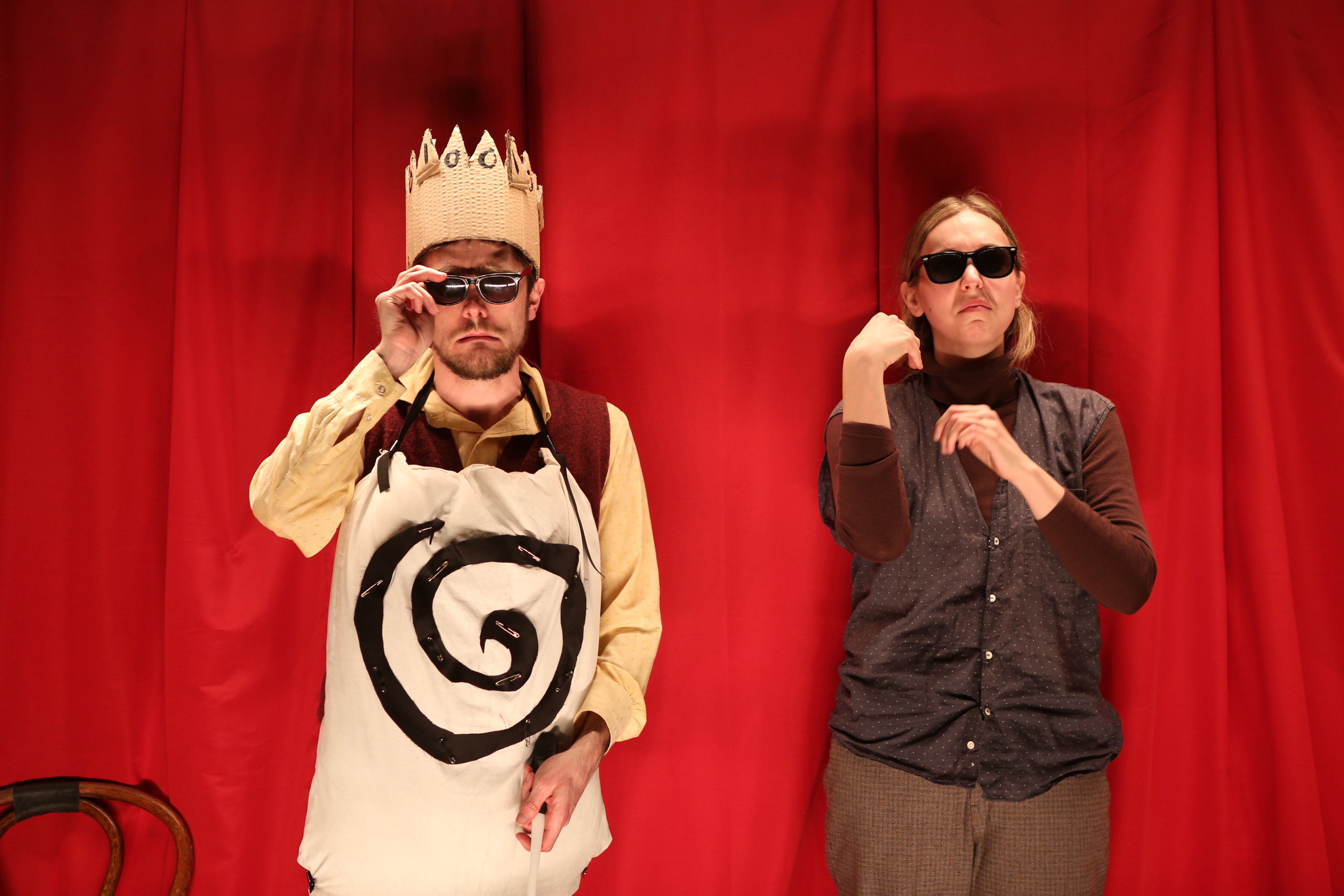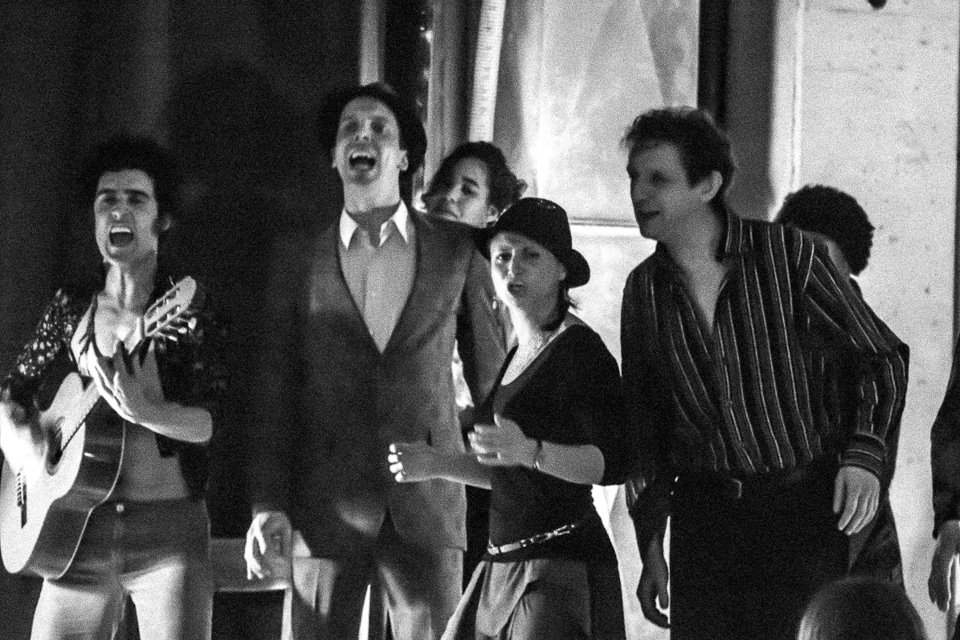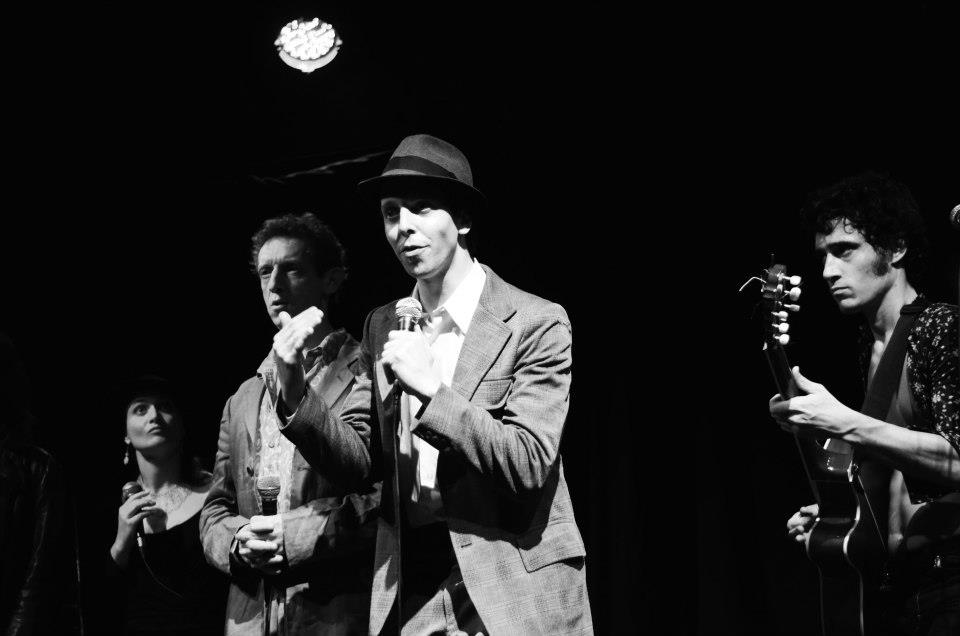Preview of Yale Cabaret season 48
For fans of the Yale Cabaret, this time of year introduces the new season under the venue’s new team. Next week will come the official kick-off to celebrate the opening of season 48. This week, tickets are on sale on the Cab’s website. Last week, I talked with the new co-Artistic Directors—David Bruin, dramaturg, Julian Elijah Martinez, actor, and Leora Morris, director—and the Managing Director Annie Middleton, all commencing their third year in the Yale School of Drama, about what’s in store.
“The Cab” is the basement performance space at 217 Park Street, run by YSD students, presenting shows Thursday through Saturday at 8 p.m. and at 11 Friday and Saturday. The Cab’s kitchen, run by chef Anna Belcher, offers pre-show dining, with beer and wine served, beginning at 6:30 and, for the later shows, small plates and desserts and drinks beginning at 10. The Cab is a unique theatrical experience in its immediacy and, in its rapid turnover of shows, a challenge to keep up with.
rear to front: Julian Elijah Martinez, Annie Middleton, Leora Morris, David Bruin
As is usual, the ADs and MD came to our meeting knowing the first three shows of the season and looking forward to fleshing out the rest of the semester, through January, a bit later this month. First, a few words about the team.
Bruin, Martinez, and Morris have each directed and performed in shows at the Cabaret. Most recently, Morris directed the varied and amorphous theatrical extravaganza love holds a lamp in this little room for the Yale Summer Cabaret 2015. She also performed as one of the four dancer/actors, along with Martinez, in Solo Bach in last season’s Cabaret, and directed the powerful play He Left Quietly in her first year at YSD.
Martinez appeared thrice at the Cabaret in his first year: as a sensitive boyfriend in The Defendant, as a conflicted street artist in We Fight We Die (proposed and co-produced by Middleton) and as one of The Brothers Size in Luke Harlan’s gripping production of Tarrell McCraney’s myth-based play. Last year, in addition to his role in Solo Bach, Martinez directed a production of Touch, starring classmate Jonathan Majors. Between the two term-time Cab seasons, Martinez played in four of the five productions in the Yale Summer Cabaret of 2014.
Last Cab season, Bruin directed the challenging two hander Quartet and acted in a new translation of Korean playwright Geun-Hyung Park’s odd family drama Don’t Be Too Surprised. The previous year, Bruin conceived and directed The Crazy Shepherds of Rebellion, an imaginative recreation of the early days of theater greats Edward Albee and María Irene Fornés, and also took part in the topical comedy Derivatives and acted in an adaptation of a Raymond Carver story.
Taken together (to say nothing of time spent in the kitchen), that spells a lot of Cab time, but we might say the team ain’t seen nothing yet in terms of how much dedication to our favorite New Haven venue they’re in for.
Seeing the Cab as “the cultural hub for artistic expression,” this year’s team hopes to expand the Cab’s audience with giveaway tickets, lowered prices, and a mission to “help each show find its audience.” What the Cab has going for it is “the passion behind the projects.” The students who present work there are doing it on their own time and for their own reasons. “There’s a roughness to the Cab,” as Bruin says, “the space is not pristine,” and that informality gets students “excited to create what they want to create.” As facilitators in this process, Morris says, the Cab team will be holding “office hours”—as sounding boards and a first response team to whatever their colleagues come up with.
When I asked the team if their first impressions of the Cab made it seem “the theater of their dreams” Martinez told how, on his visit as a prospective YSDer, someone got him into YSD night (the performance reserved for students and faculty at the school). The show, Lindbergh’s Flight, and the camaraderie of the audience got him excited about YSD—and his dad, visiting with him, also had a great time. The Cab, in its offbeat offerings, can have that kind of effect, making you wonder why you bother seeing more traditional theater.
For Middleton, who ran the Cab's box office in season 46, the space is “the place of my dreams: theater as a community with everyone welcome and everyone wearing different hats and collaborating.” Everyone who praises the Cab eventually comes back to the fact that it’s a team effort and that the audience is very much part of what makes it work. Compared to many a theater venue, the Cab has a rather young clientele and the team wants to find ways to make the Cab an early theater experience for younger audiences.
The tags for this year’s Cab marry images and ideas to describe the Cab (never easy): a cave, a cauldron, a drum, and a kaleidoscope. We might parse that collection of objects in various ways, but, for the team, each image-idea makes for an association: the Cab is a cave where community gathers, a kaleidoscope in its diversity, a cauldron where the art of cooking up something unusual takes place, and a drum that sends a message and calls us together. So let’s beat the drum. As Martinez says, the first three shows of the season give a good sense of the breadth of the Cabaret, showing “the full range of what can happen” there:
First, a welcome back show with a cast of 10 and a theme that seems appropriate. Charles L. Mee’s Wintertime has been adapted by Bruin and third-year playwright Jiréh Breon Holder as We Are All Here, which means, Bruin says, “we’ve taken a lot of liberties” with the play, but that’s in-keeping with Mee’s desires. The playwright wants his plays to be adaptable and tweakable for a variety of circumstances—professional and amateur and everything else. The play, Bruin says, “embodies the ideals of the Cab: turn it into what you want,” and involves music, dance, “surprise guests” and a plot that takes romantic comedy somewhere else. Two lovers visit a beloved spot only to find others there. Can we all get along? September 17-19
Next, a darker, text-based play, highlighting the virtues of an intimate playing space when viewing a play more confrontational than comedic. Second-year director Jesse Rasmussen’s proposal for Scots author David Harrower’s Knives in Hens stresses the play as “a democratic experience”—with its theme of a woman “learning how to speak in a man’s world”—and Morris stresses the “pleasure in the play’s suspense.” A three-actor love triangle—a ploughman, a miller, a woman—in a rural world becoming industrialized, the show is, the team says, “a contemporary, poetic fable.” September 24-26
Up third is a new, devised piece that will showcase the advantages of the collaborative and more creatively scripted production: “I’m With You in Rockland”—a line from Allen Ginsberg’s landmark poem “Howl”—brings together three participants from each of the three artistic schools at Yale: Drama, Music, Art. Created by Kevin Hourigan and his company of collaborators, the play offers not a bio of Ginsberg but takes his life and work as an inspiration and provocation. The play’s title borrows a repeated phrase in the poem, addressed to Carl Solomon whom Ginsberg met when they were both relegated to “Rockland”—a facility for psychiatric evaluation. Part play, part concert, part installation, the show is “an interdisciplinary inquiry that asks ‘what is the value of the artist today?’” October 8-10
Sometimes, as Morris says, the Cab has been “too cool” in its detachment from reactions to its offerings. The current team asks its colleagues and creators and audience to “not be afraid of being overly passionate” and to not let irony undermine the always positive “value of heart.” The Cab team means to put their hearts and souls into this year’s season. Won’t you join them?
Visit the website to see info about shows, menu, to buy tickets and to make donations. There are a range of sponsorship possibilities that allow the audience to put their money where their mouth is. As Joyce said of Finnegans Wake: “its consumers are they not also its producers?”
Yale Cabaret
48th Season
217 Park Street








